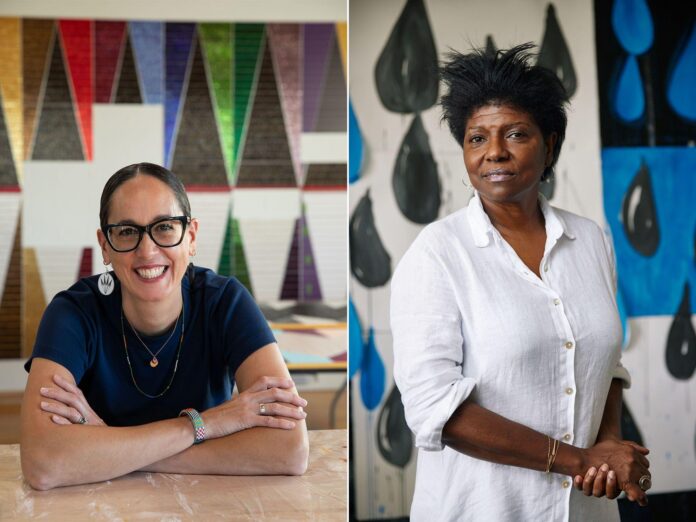The MacArthur Foundation has announced the recipients of the 2023 John D. and Catherine T. MacArthur Foundation Fellowship, and the 20 fellows named this year have practices in fields that include the sciences and the literary and visual arts. Known colloquially as the MacArthur “genius grant”, each fellow receives an $800,000 grant that is doled out over the course of five years. There are no restrictions on how the funds are spent.
Among the 20 recipients this year are four visual artists: María Magdalena Campos-Pons, Raven Chacon, Carolyn Lazard and Dyani White Hawk.
María Magdalena Campos-Pons is an interdisciplinary artist who was born in Cuba and lives and works in Nashville, Tennessee. As she put it in an interview with the MacArthur Foundation, Campos-Pons uses a range of media including photography, painting, sculpture and performance “to tell a very particular story; the viewpoints of a woman who was born in the Caribbean from a very particular strong heritage and how she interpreted not only the history of the past but fundamental scenes of our time and a vision of the future”. Her work is currently on view in a solo exhibition at the Brooklyn Museum entitled María Magdalena Campos-Pons: Behold (until 14 January 2024).
Carlyn Lazard lives and works in Philadelphia. As a statement from the MacArthur Foundation puts it, Lazard is concerned with “aesthetic perception and using accessibility as a creative tool for collective practices of care”, adding that “their work challenges ableist expectations of solo productivity and efficiency”. In installations like Crip Time (2018), which is in the Museum of Modern Art’s permanent collection, Lazard uses video to underline the lack of consideration that our culture pays towards the inclusion and wellbeing of people with disabilities.
Raven Chacon is a Diné-American composer and artist whose experimental music, performances and sound installations often deal with the colonial history of the United States and the violence and harm that it continues to leave behind. His work ranges from operas and scores that are performed live to work that can be more conventionally displayed in a gallery or museum, such as drawings and videos.
Dyani White Hawk is an interdisciplinary artist whose work draws inspiration both from the artwork of the indigenous Lakota people—of whom she is a descendant—and from the abstract paintings of 20th century European and American art history. “Abstraction is a global practice that has been practiced in communities for longer than I think we understand,” she told the foundation. “Distilling complex ideas and thoughts down to the most graceful and poignant gestures—that’s a human practice.” In addition to visual cues, she also often incorporates materials and techniques of the Lakota people into her work—including her contribution to last year’s Whitney Biennial—such as beadwork, porcupine quillwork and parfleche painting.
There is famously no application process for the MacArthur fellowships. Instead, there is an often yearslong process in which the fellows are nominated and endorsed by their peers or by other community members. There is also no interview process and the nominees themselves are not made aware that they are being considered for the award until and unless they win it, at which point they receive a phone call from the foundation. Past winners include the artists Mark Bradford, Jordan Casteel, Paul Chan, Nicole Eisenman, Jeffrey Gibson, Titus Kaphar, Kerry James Marshall, Shahzia Sikander, Julie Mehretu and Kara Walker, among others.

























